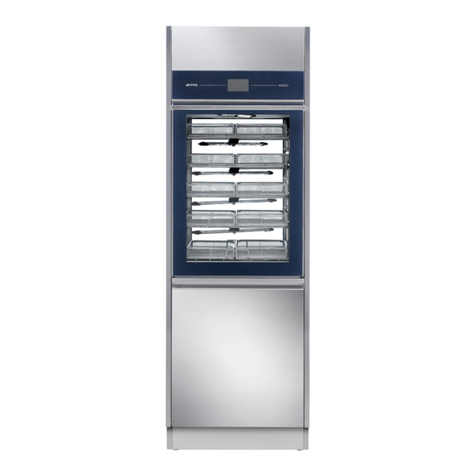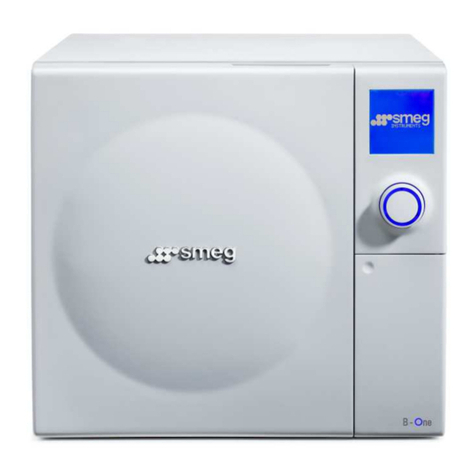8.7 PROGRAM RUNNING....................................................................................................................... 35
8.7.1 PROGRAM RUNNING –“EASY MODE” DISPLAY ...................................................................... 35
8.8 PROGRAM COMPLETED................................................................................................................... 36
8.9 PROGRAM COMPLETED WITH ANOMALIES –WARNINGS.............................................................. 36
8.10 ALARMS –SERIOUS ANOMALIES..................................................................................................... 37
9 SETUP AND PARAMETER SETTING PROCEDURES.................................................................................... 38
9.1 Accessing the menus ....................................................................................................................... 40
9.2 Setup and dependent headings....................................................................................................... 40
9.3 SETTING THE TIME –Clock menu .................................................................................................... 44
9.4 SETTING THE DATE –Date menu..................................................................................................... 45
9.5 DRY HOUR COUNTER –DryH........................................................................................................... 45
9.6 CYCLE COUNTER –Count................................................................................................................. 46
9.7 PROGRAM ENABLING –PR EN......................................................................................................... 46
9.8 RESET ............................................................................................................................................... 46
9.8.1 RESET MC –Machine Configuration........................................................................................ 46
9.8.2 RESET ME –Machine Equipment ............................................................................................ 47
9.8.3 RESET DF –Dryer filter hours, relative decremental counter ................................................. 47
9.8.4 Reset RM –Number of cycles remaining before maintenance............................................... 48
9.9 PRINT –Reprint last cycle and machine parameters....................................................................... 48
9.10 LOG –Management of internal log, downloading of log file to USB drive ..................................... 49
9.11 ABOUT –firmware version installed ............................................................................................... 49
9.12 MEMORY AND PRINTOUT................................................................................................................ 50
9.13 EDITING CUSTOM PROGRAMS ........................................................................................................ 52
10 RECOMMENDED DETERGENTS AND IMPORTANT NOTICES................................................................ 53
11 PREPARING THE LOAD FOR THE WASHING AND DISINFECTION CYCLE .............................................. 55
12 ALARMS, WARNING AND DEVICE RESPONSE TO BLACKOUTS ............................................................ 56
12.1 WARNINGS....................................................................................................................................... 57
12.1.1 WARNING TABLE ..................................................................................................................... 58
12.2 ALARMS ........................................................................................................................................... 59
12.2.1 ALARM TABLE .......................................................................................................................... 60
13 CLEANING AND MAINTENANCE .......................................................................................................... 64
13.1 PRELIMINARY PRECAUTIONS........................................................................................................... 64
13.2 CLEANING THE DEVICE and its parts................................................................................................ 64
13.3 Cleaning the FILTERING UNIT .......................................................................................................... 66
13.4 IF THE DEVICE IS TO BE OUT OF USE ............................................................................................... 67
13.4.1 FOR A FEW HOURS .................................................................................................................. 67
13.4.2 FOR 24 HOURS OR MORE ........................................................................................................ 67
13.4.3 FOR 10 DAYS OR MORE ........................................................................................................... 67































